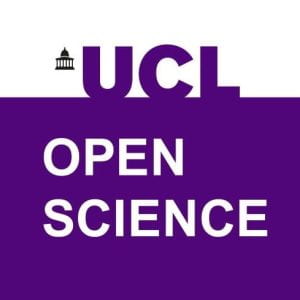Copyright and AI, Part 1: How Does Copyright Apply to AI-Generated Works?
By Rafael, on 21 June 2024
Guest post by Christine Daoutis, UCL Copyright Support Officer.
This the third blog post of the collaborative series between the UCL Office for Open Science and Scholarship and the UCL Copyright team. Here, we continue our exploration of important aspects of copyright and its implications for open research and scholarship.

Photo by Google DeepMind.
In a previous post we introduced questions that arise when using and creating materials protected by copyright. What options are available to you if you want to reuse others’ work (e.g. articles, theses, images, film, code) in your research? And what do you need to consider before you share your own research with others? Issues around copyright protection, permissions, exceptions, licences, and ownership need to be examined when creating new works and including others’ materials. These questions are also relevant when we think about works that are created with the use of GenAI tools, such as ChatGPT. However, with the use of these technologies still being relatively new and the legal aspects being shaped as we speak, answers are not always straightforward.
GenAI Training Data: GenAI models are trained on a large number of materials, usually protected by copyright (unless copyright has expired or been waived). Does this mean AI companies are infringing copyright by using these materials? How would copyright exceptions and fair dealing/fair use apply in different countries? How would licence terms – including the terms of open licences – be respected? Answers will come both from legislation and codes of practice introduced by governments and regulatory bodies (such as the EU AI Act) and from the outcomes of court cases (see, for example, Getty Images vs Stability AI, the Authors’ Guild against OpenAI and Microsoft.
User Prompts: The prompts a user provides to the model (instructions, text, images) may also be protected. You should also consider whether the prompts you enter include any confidential/commercially sensitive information that should not be shared. Please see UCL’s IP policy for guidance on this.
AI-Generated Work: Is the AI-generated work an original work protected by copyright? Is it a derivative of other original works, and therefore, possibly infringing? If it is protected, who owns the copyright? The answer to this will vary by case and jurisdiction. In the US, a court ruled that AI-generated images in a comic book were not protected, although the whole comic book and story were. In China, it was ruled that images generated with the use of GenAI tools would be protected, with the owner being the person who provided the prompts. The UK’s CDPA (9.3) states that ‘in the case of a literary, dramatic, musical or artistic work which is computer-generated, the author shall be taken to be the person by whom the arrangements necessary for the creation of the work are undertaken’.
In short, GenAI raises questions about what constitutes an original work, what constitutes infringement, how copyright exceptions and fair dealing/fair use are applied, and how authorship is established. While these questions are still being shaped, here are three things you can do:
- Consider any limitations in using GenAI besides copyright (e.g., confidentiality, biases, publishers’ policies). See UCL’s Generative AI hub for guidance.
- Be transparent about how you use GenAI. See UCL Library guidance on acknowledging the use of AI and referencing AI.
- If you have any copyright-related questions on the use of GenAI, contact the copyright support service.
While GenAI has opened up more questions than answers around copyright, it also offers an opportunity to think about copyright critically. Stay connected with us for Part 2 of this blog post, which will discuss how new technologies, including GenAI, are changing our understanding of copyright. We look forward to continuing this important conversation with you.
Get involved!
 The UCL Office for Open Science and Scholarship invites you to contribute to the open science and scholarship movement. Stay connected for updates, events, and opportunities. Follow us on X, formerly Twitter, LinkedIn, and join our mailing list to be part of the conversation!
The UCL Office for Open Science and Scholarship invites you to contribute to the open science and scholarship movement. Stay connected for updates, events, and opportunities. Follow us on X, formerly Twitter, LinkedIn, and join our mailing list to be part of the conversation!
 Close
Close





